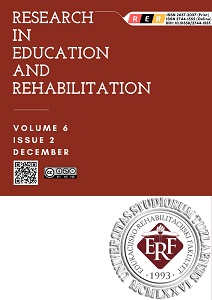Significance and Frequency of Works of Art and Reproductions Use in Development of Artistic-Aesthetic Assessment of Children of Lower Primary School Age
Significance and Frequency of Works of Art and Reproductions Use in Development of Artistic-Aesthetic Assessment of Children of Lower Primary School Age
Author(s): Emina BegovićSubject(s): Aesthetics, School education, Pedagogy
Published by: Edukacijsko-rehabilitacijski fakultet Univerziteta u Tuzli
Keywords: work of art; textbook; artistic-aesthetic communication; art language;
Summary/Abstract: The aim of this paper is to examine a teacher’s role in the development of artistic-aesthetic communication, based on the representation of the use of works of art and their reproductions in art education. The research was conducted on a sample of 220 respondents, of which 200 of them were students and 20 were homeroom teachers. The research part presents the results and interpretation of surveys conducted among teachers and students. The t-test was calculated to determine whether there are significant differences between the obtained results on certain variables, that is, those related to demographic data. The results indicate that homeroom teachers are insufficiently involved in the development of art-aesthetic communication, that is, child's communication with a work of art. Regardless of the fact that 70% of teachers believe that it is important for students from the first to fifth grade of primary school to learn about and analyze valuable works of art, 35% of teachers and more than half of the students (55%) claim that they never use art textbooks. Also, 54% of students declare that they never or rarely discuss art problems with the teacher, even though art problems form the backbone of a lesson, and are found in works of art or their reproductions. When it comes to visiting a gallery, museum or other exhibitions, 51% of students and 54% of teachers claim that they never visit these institutions, while 40% of teachers said that they visit them once a year. The t-test determined that there are no significant differences between the responses of respondents (a sub-sample of teachers) in relation to demographic data.
Journal: Research in Education and Rehabilitation
- Issue Year: 6/2023
- Issue No: 2
- Page Range: 267-278
- Page Count: 12
- Language: English

